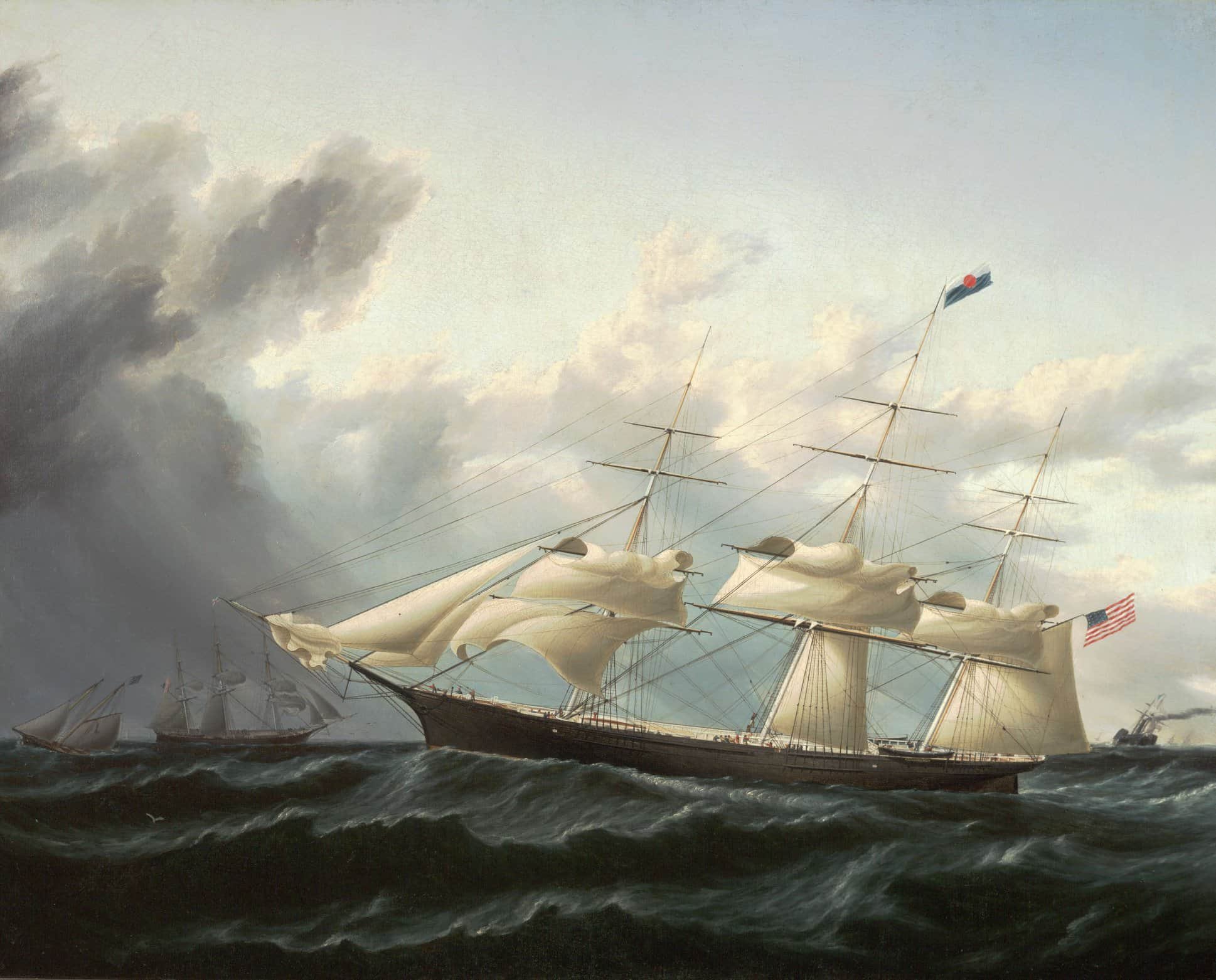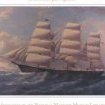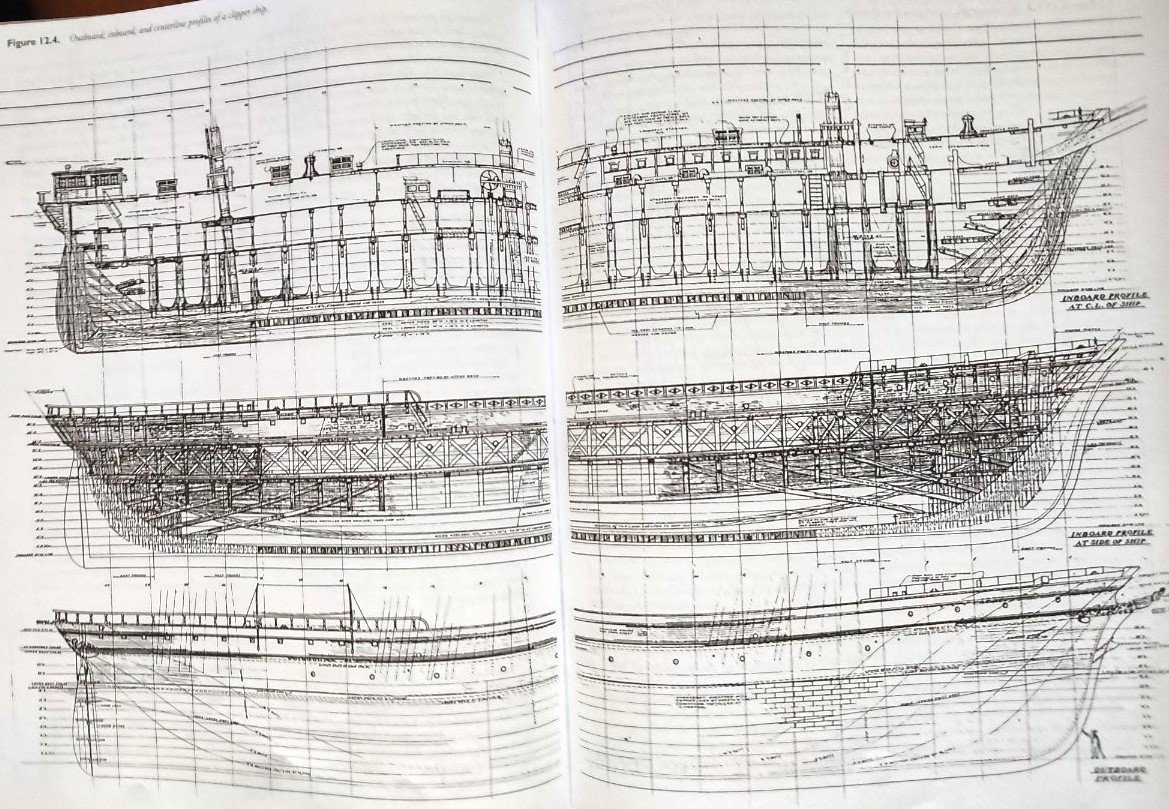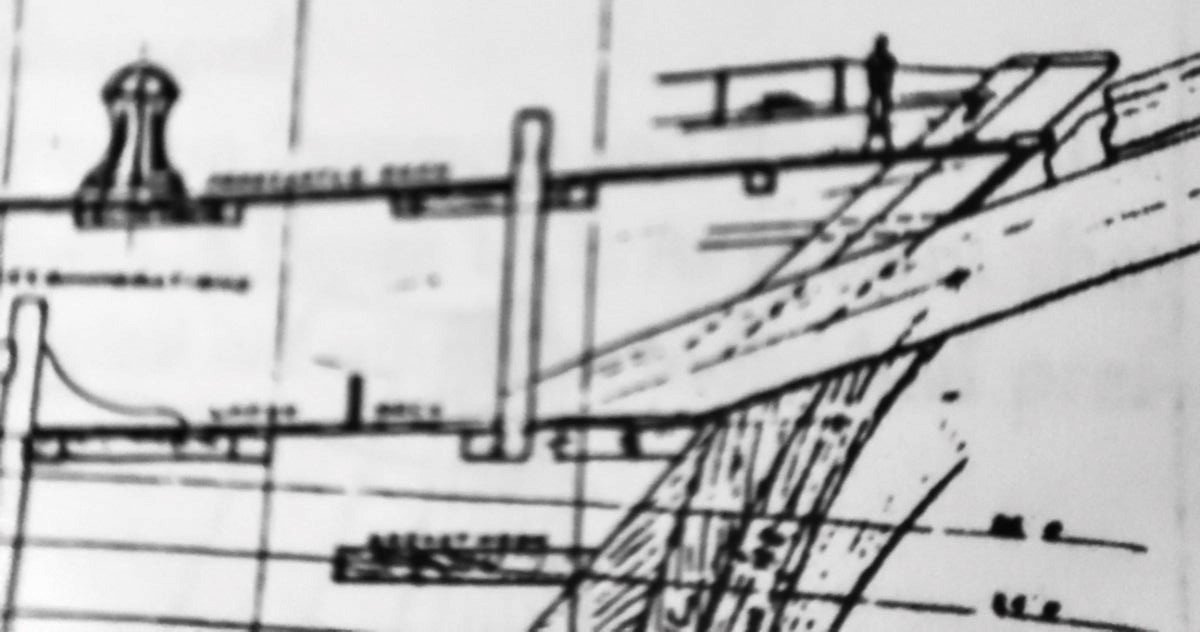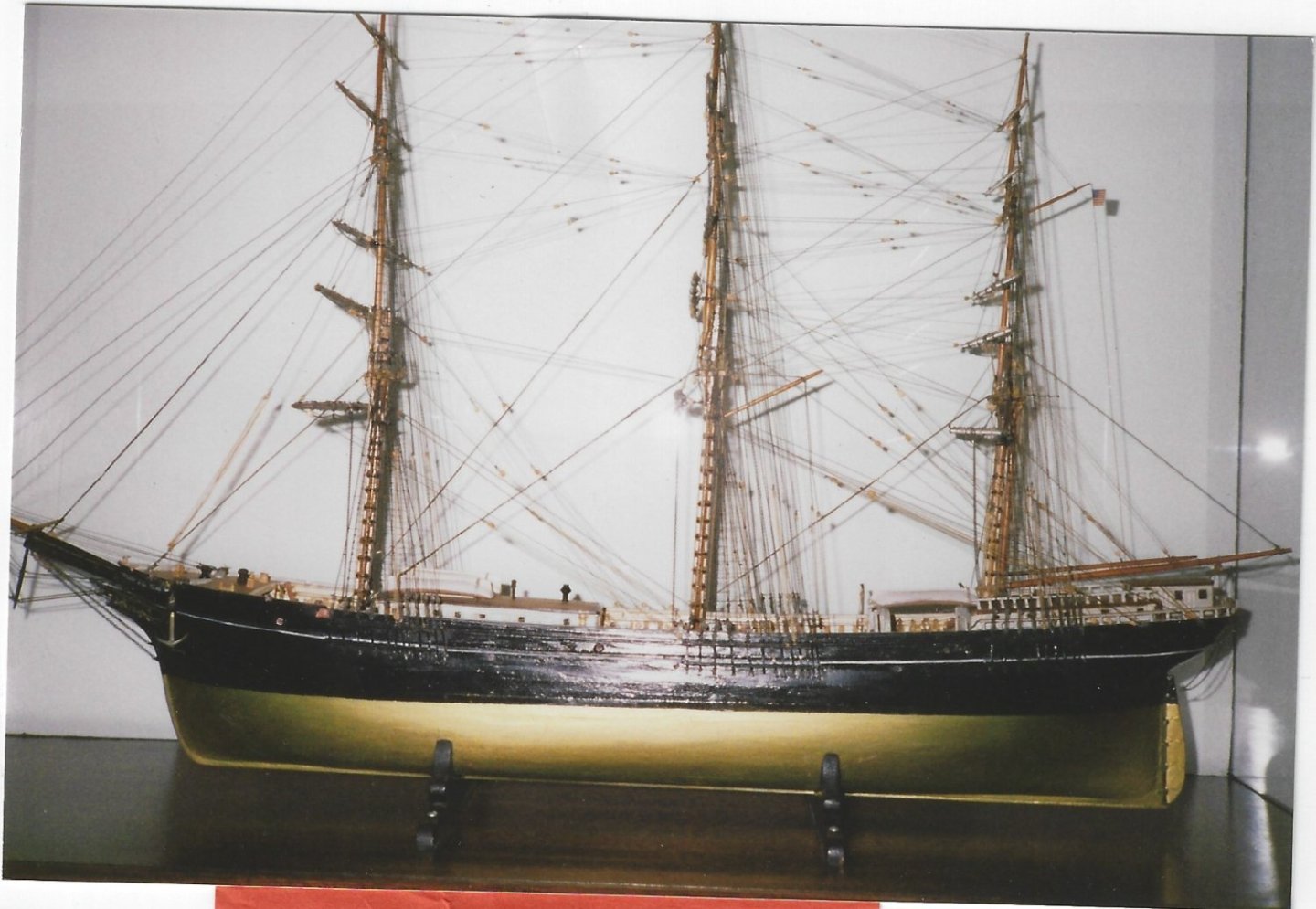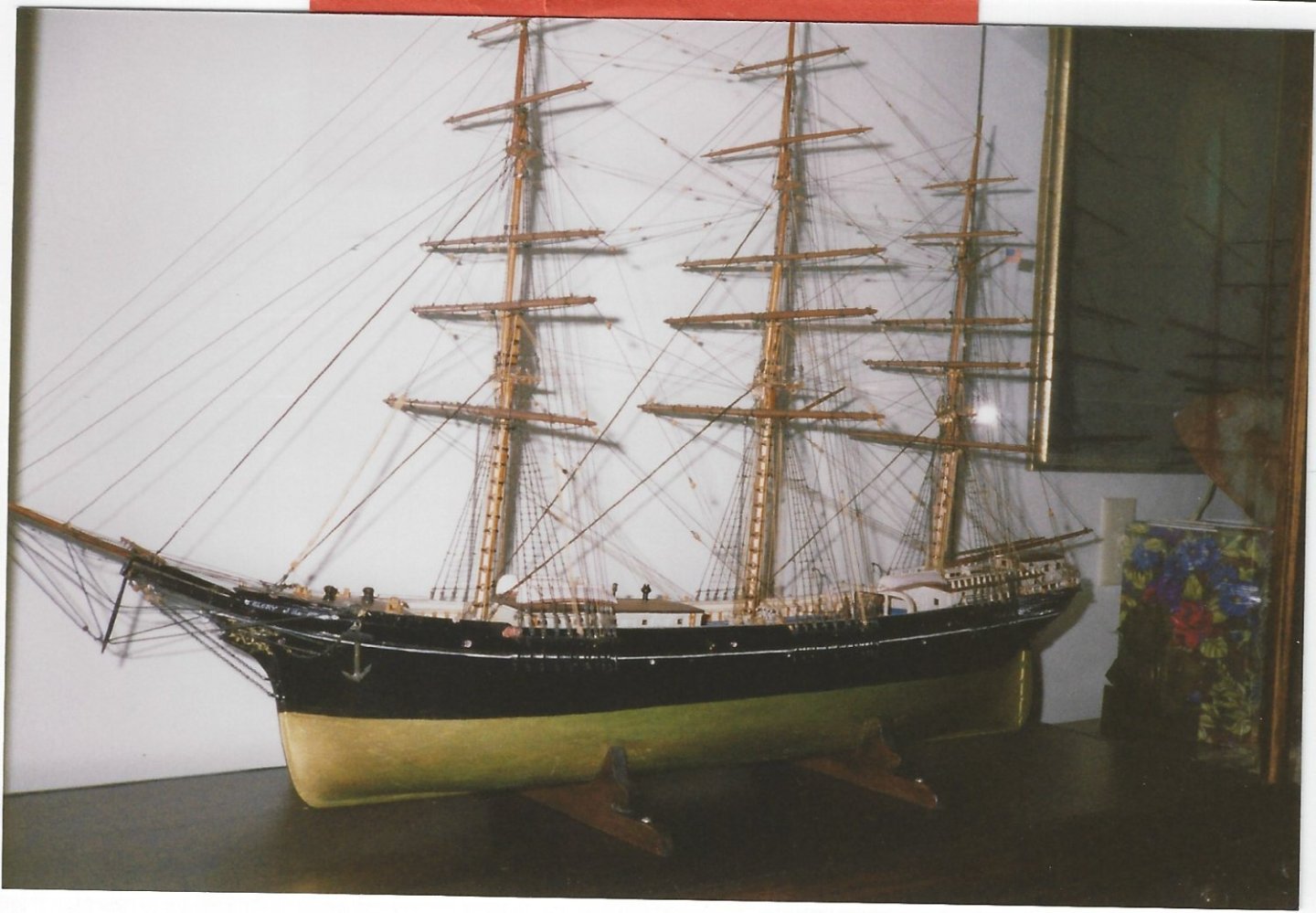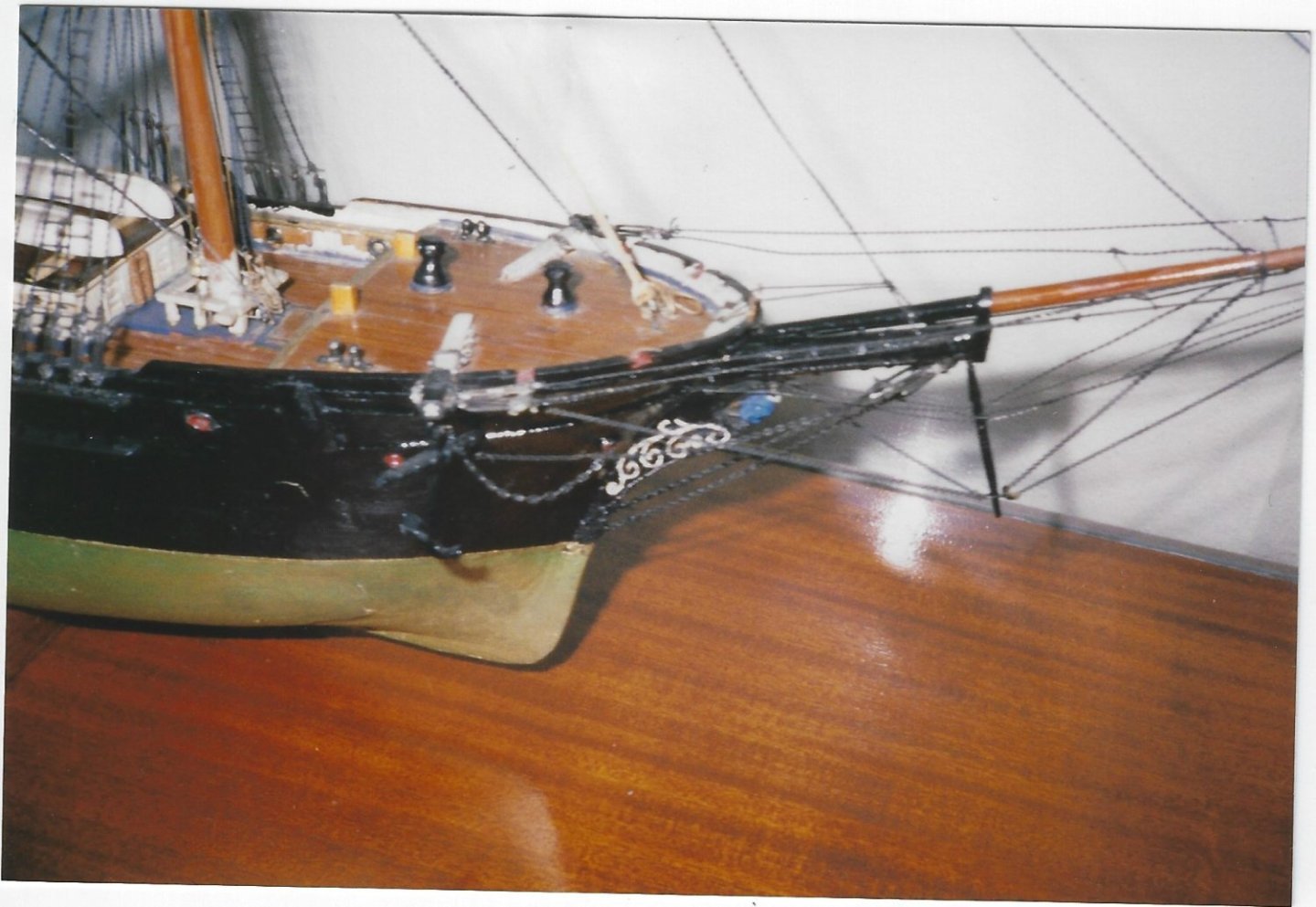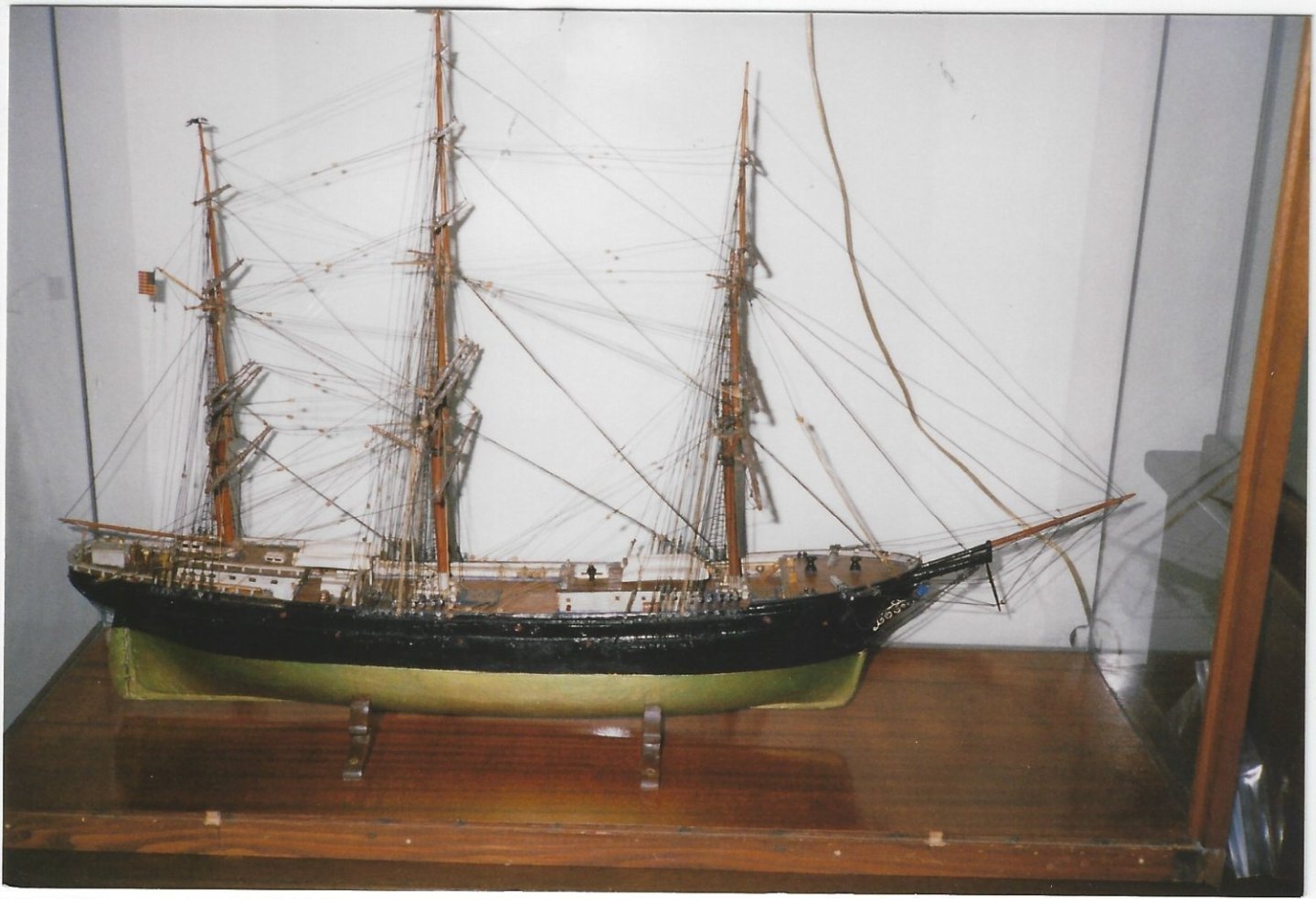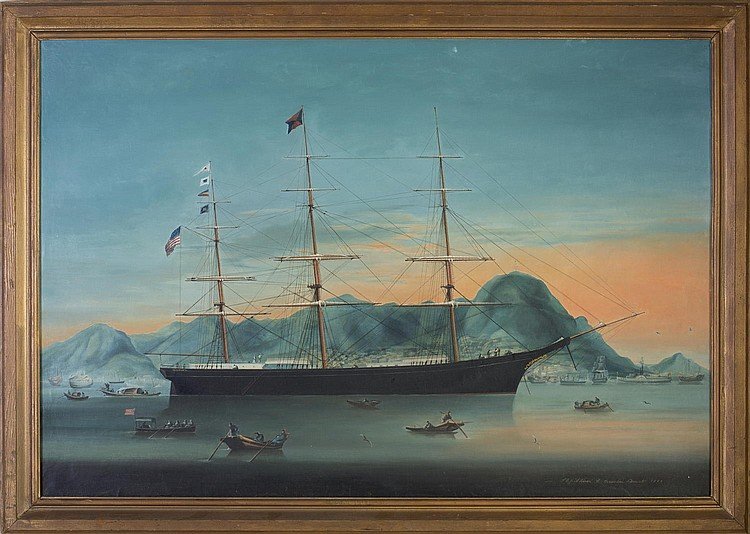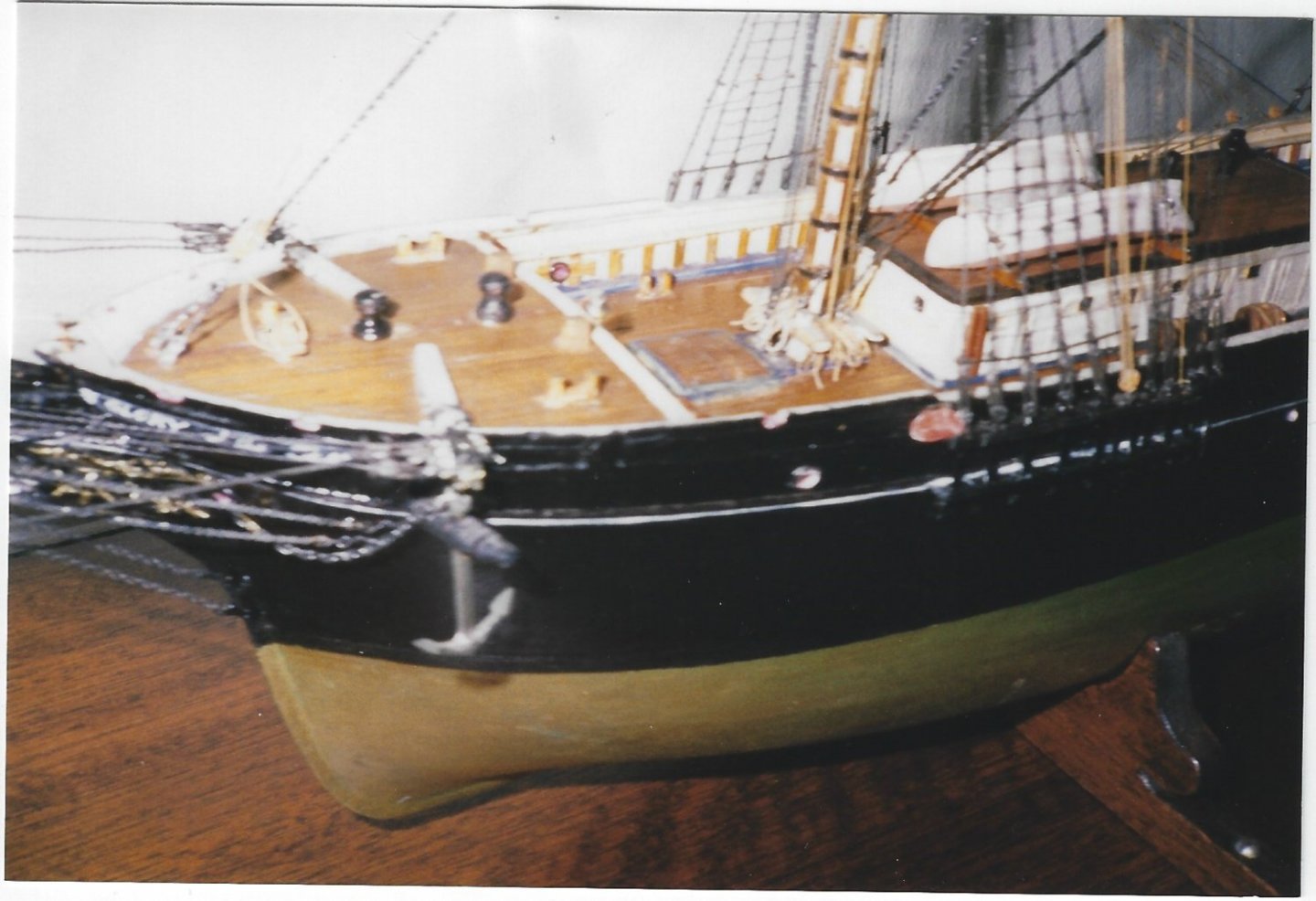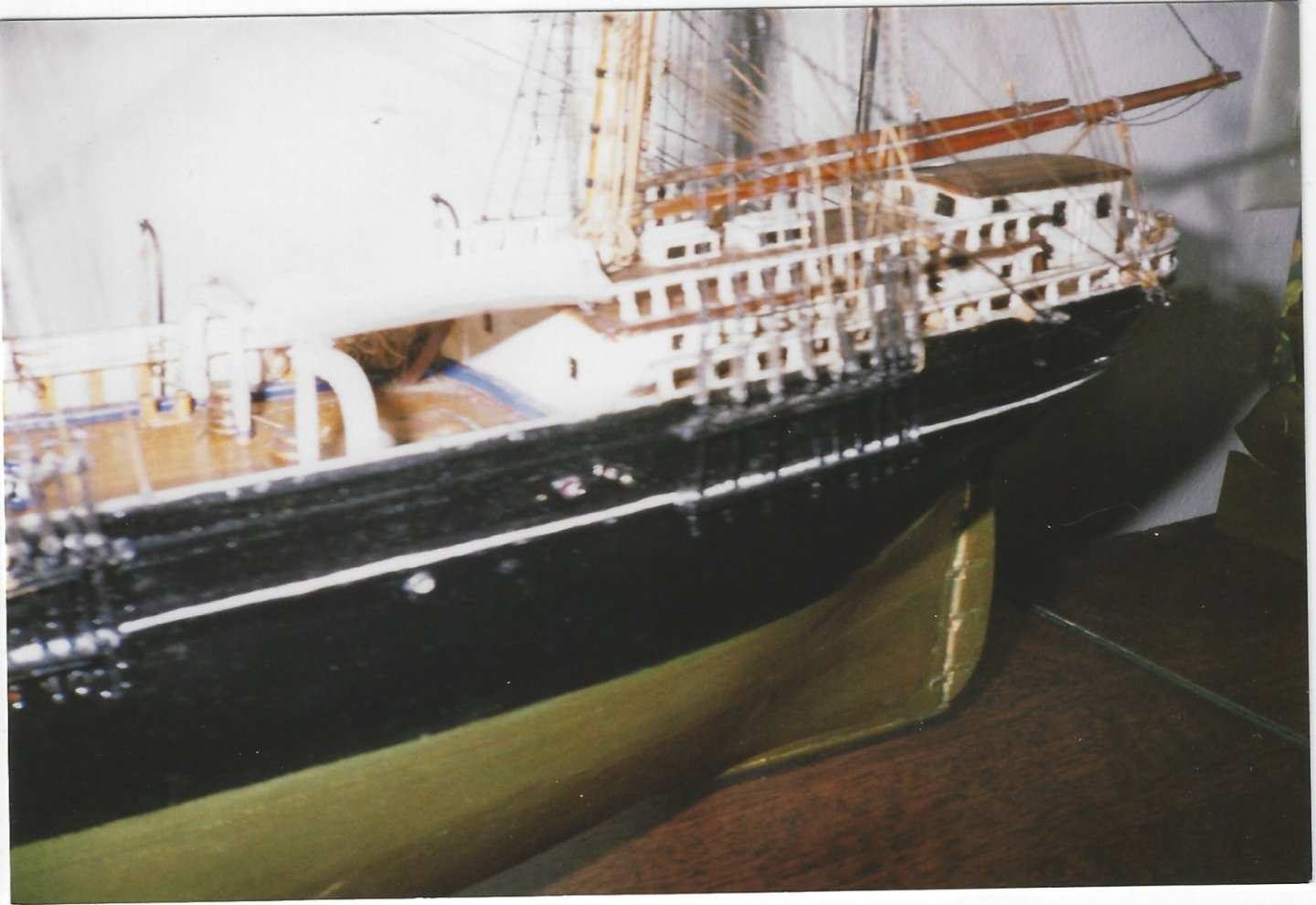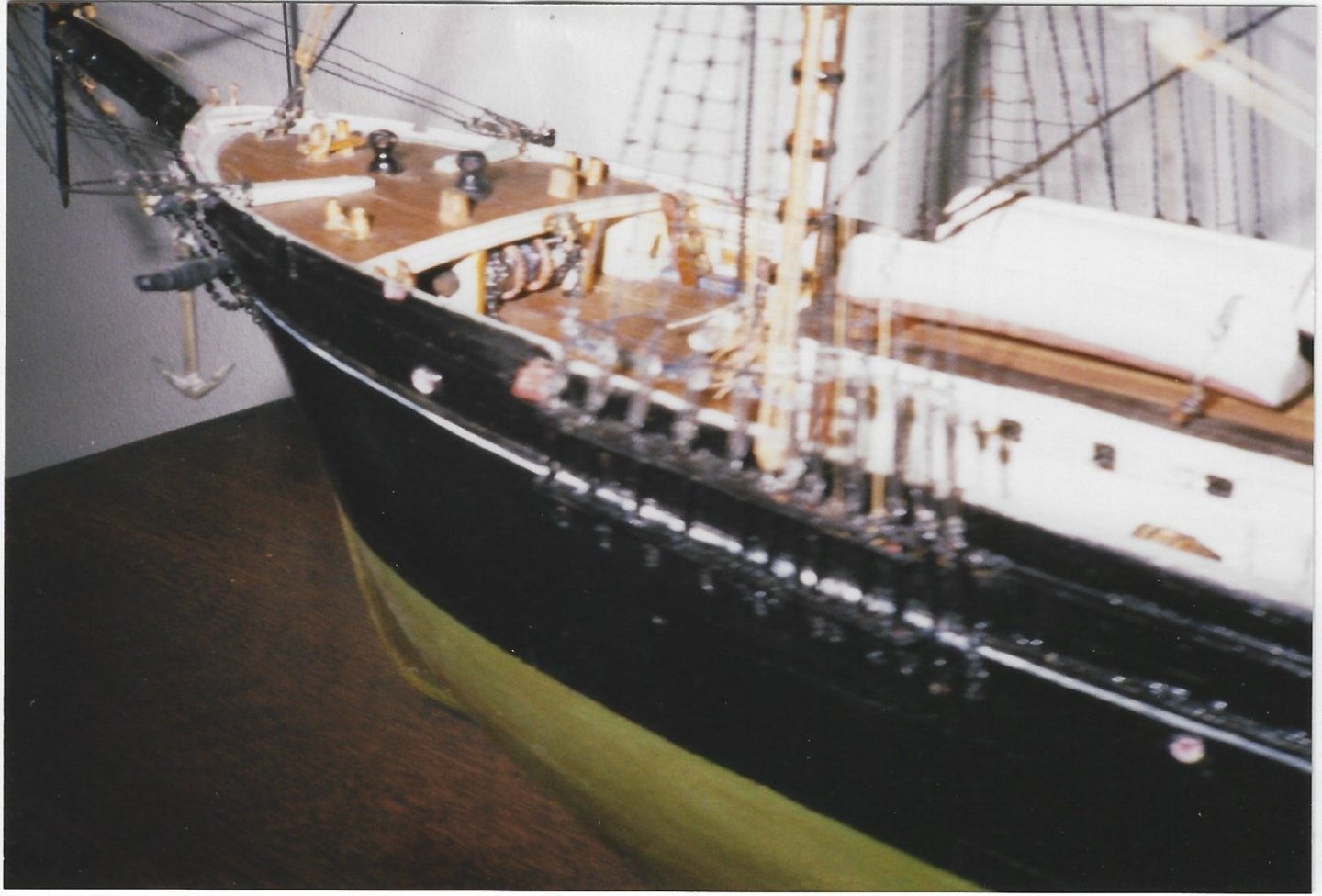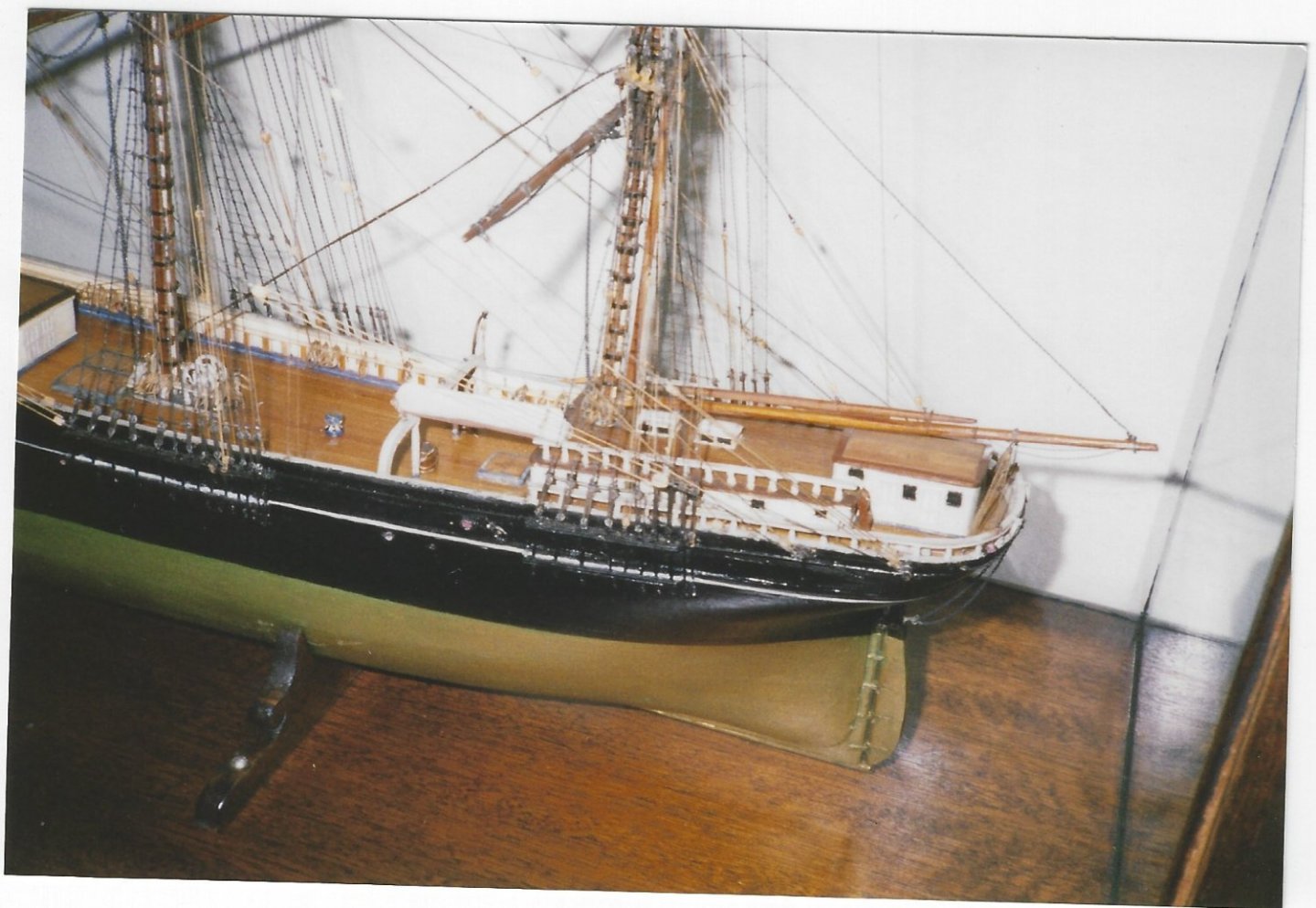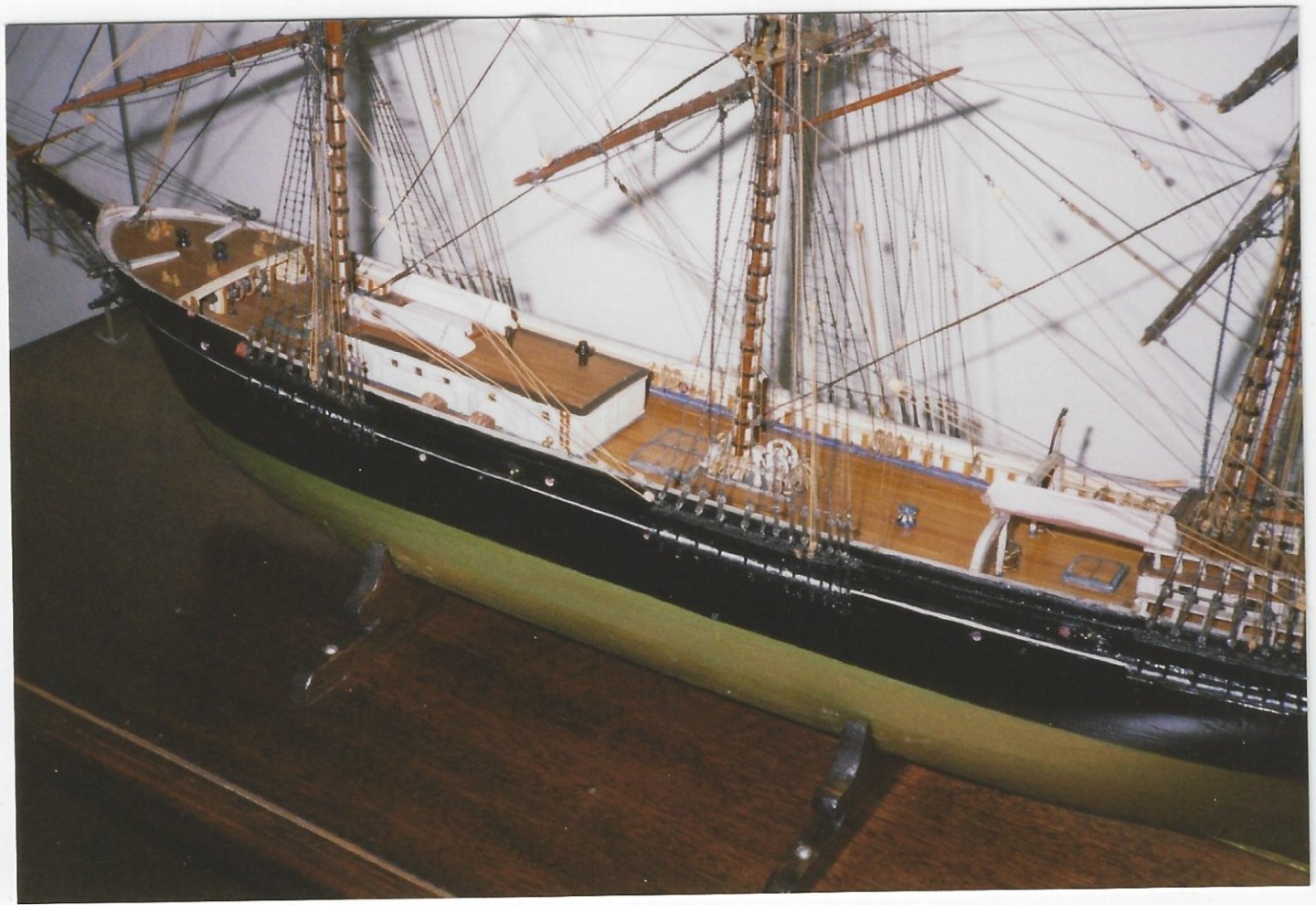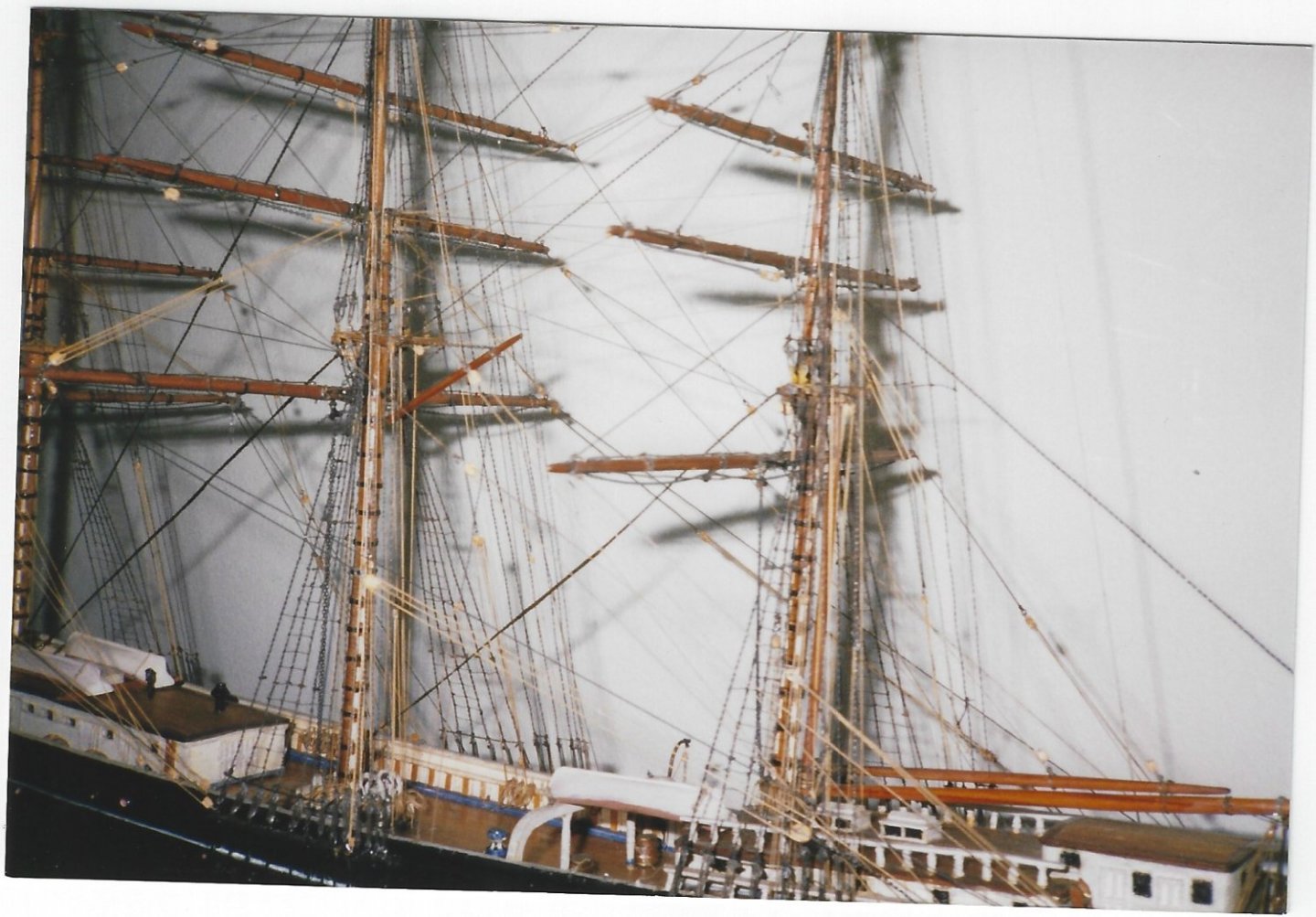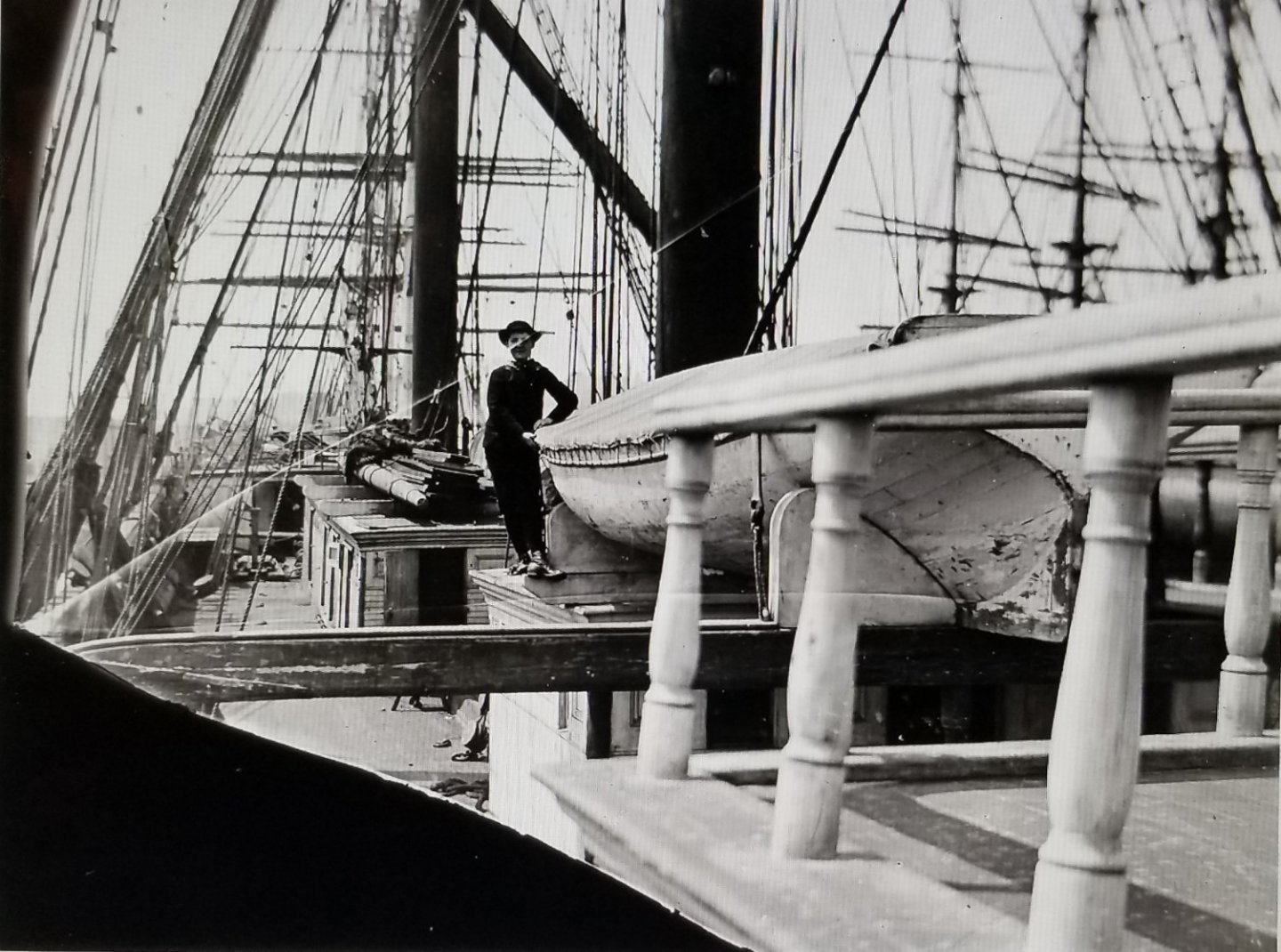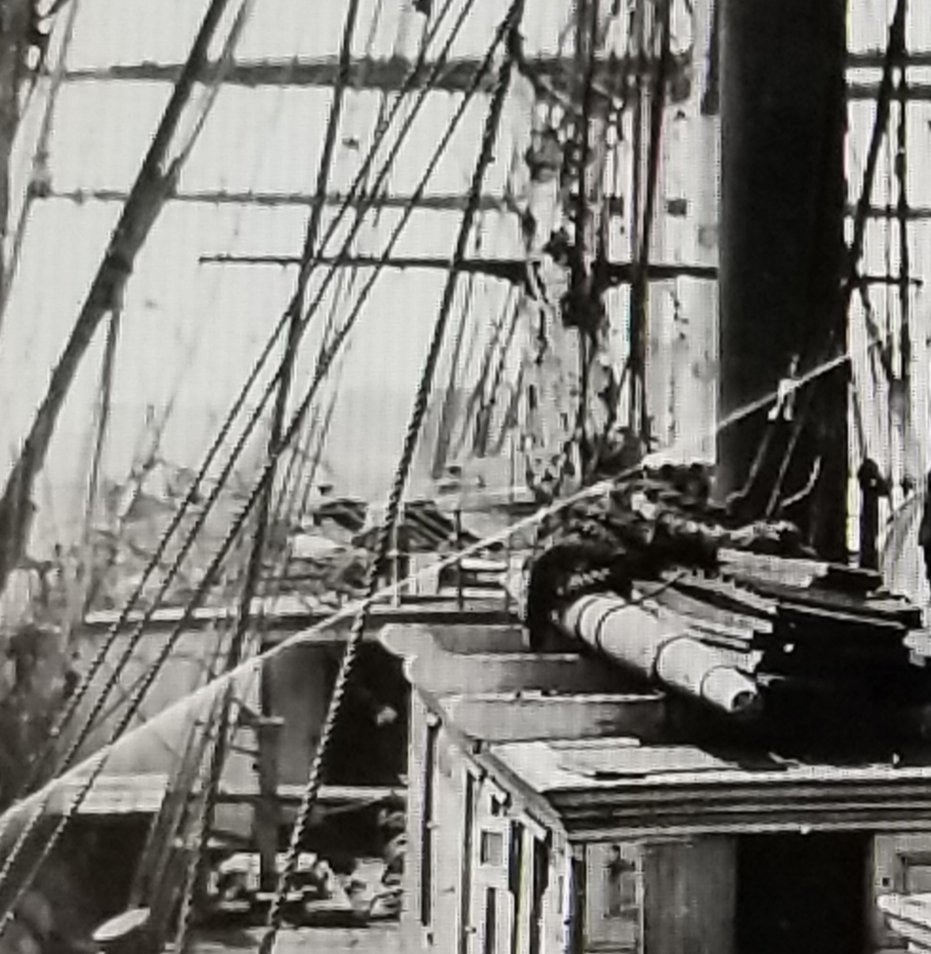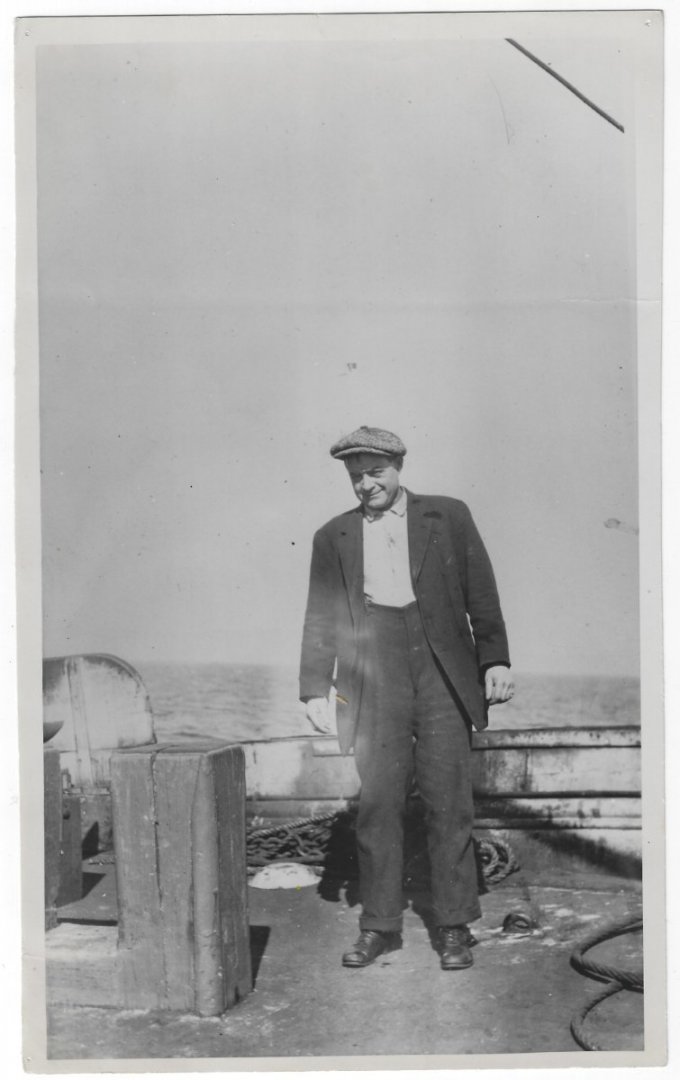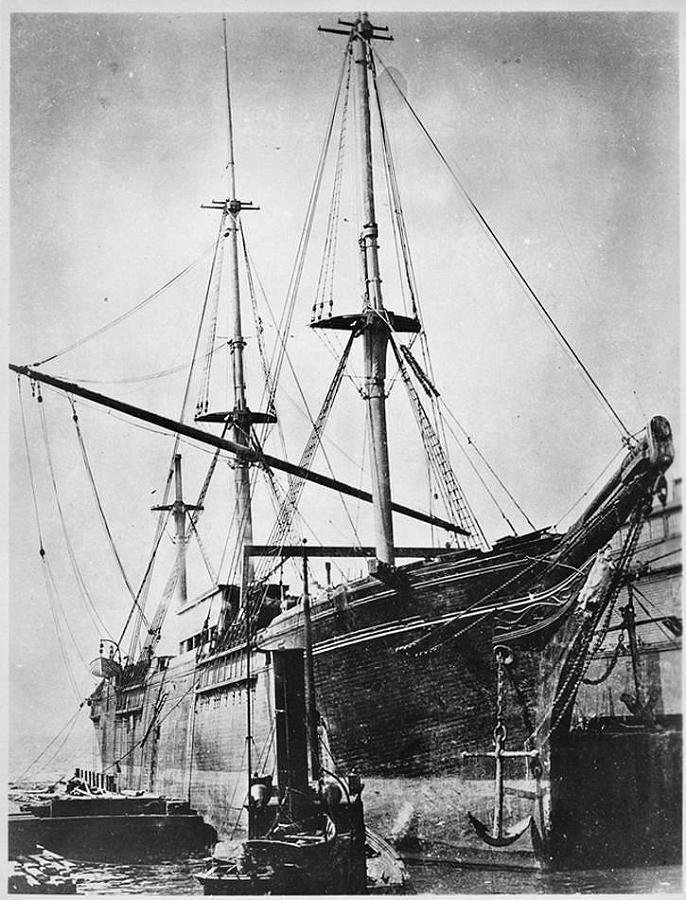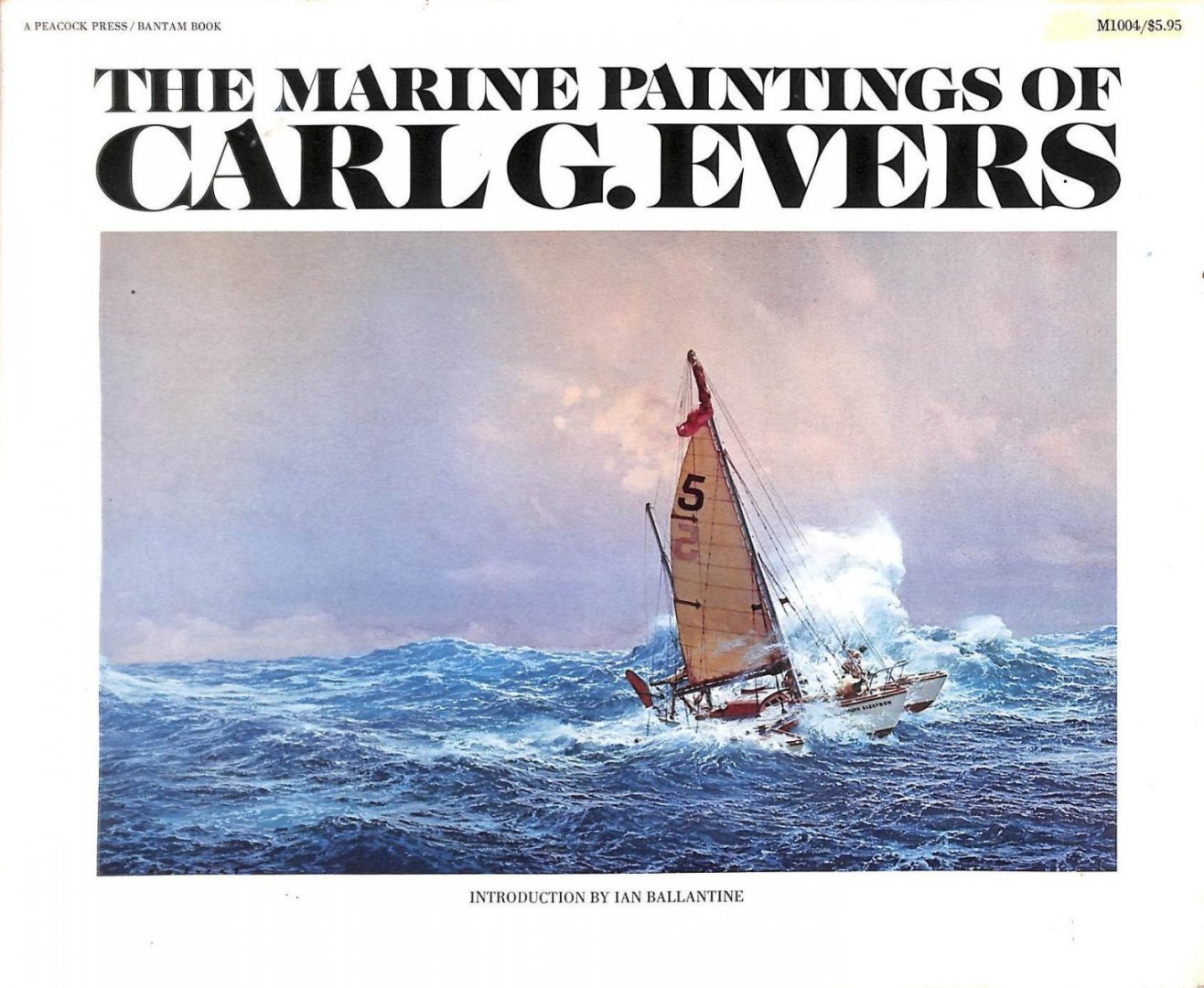-
Posts
2,094 -
Joined
-
Last visited
Content Type
Profiles
Forums
Gallery
Events
Everything posted by ClipperFan
-
Rob, Simply beautiful rework. Fairleads you refer to are there on the ship but only if you know where to look for them. Well done!
- 3,560 replies
-
- clipper
- hull model
-
(and 2 more)
Tagged with:
-
Vlad, I hope you don't mind a little assist. Here's your clipper Lightning pics reoriented and lightened a little. The other way was giving me a little neck strain! 😉
- 3,560 replies
-
- clipper
- hull model
-
(and 2 more)
Tagged with:
-
Rob, Vladimir and everybody else, Mike just sent me four more pictures of Frederick Pease Harlow's beautiful models. What these images really drive home for me at least, is the order of magnitude in meticulous accuracy Rob and Vladimir's museum quality Glory of the Seas replicas represent. This is in no means intended to disparage the level of detail or obvious talent displayed by FP Harlow in the loving construction of these impressive models. I have no doubt that, if Mr. Harlow had access to the same remarkable photographic resources as have been supplied to us by Michael Mjelde who has been methodically researching Glory of the Seas since 1957, he would have produced far more faithful models to the actual vessels. If anyone wants to understand the tremendous advancement in our comprehension of McKay's final medium clipper, all they need to do is review the many images of Rob and Vladimir's models in comparison to these models of two ships constructed 80 years ago. Having laser focused specifically on the impressive hull of Glory of the Seas for over a dozen years now, I (as I'm sure Rob and Vlad would immediately agree) can spot such obvious inaccuracies in her somewhat blunt bow, bulbous stern, even her enhanced sheer as to make the Harlow model appear just rudimentary in comparison to their modern counterparts. Ironically, both Rob and I agree that FP Harlow's Glory model is the most faithful replica we've seen to date. This fuels a personal suspicion that his other model of the magnificent clipper Great Admiral is probably very similar in being a more rudimentary replica too. The last two images are of that other significant vessel which, like his Glory model, FP Harlow constructed from a cabin door salvaged from her before she was burned. Here's the description Mike gave me from his latest email: "1940. ship Great Admiral made by F.P. Harlow. The decks are of 3/16 inch planks The decks, houses, boats, spars and masts are made from a stateroom door out of the ship Glory of the Seas/. Anchors are from copper spike." "This indicates that Harlow visited the burn site and recovered at least one copper spike from the wreck but by his having one spike, it seems to indicate that he did. I don't remember, however, being told that he was present for the burning." "I also have half a dozen images of his model of Akbar." (the extreme clipper FP Harlow served on)
- 3,560 replies
-
- clipper
- hull model
-
(and 2 more)
Tagged with:
-
Rob, I never get tired of seeing progress photos on your magnificent model. Even the number of rungs on the newly installed ladders emphasizes how high the new bulkheads actually are. It's almost a shame they have to be there, as they now block most of the lovely molding behind them. I also applaud your thoroughness in replacing all iron bitts with wooden ones. Once again, having input from Michael Mjelde, a man who through his single-minded devotion to researching clipper Glory of the Seas beginning in 1957 has given us unique insights into her historical accuracy. After all, nothing beats first hand accounts of men who actually served on these wondrous vessels. It's yet another reason why I call Glory of the Seas the "Rosetta Stone" of Donald McKay's clippers.
- 3,560 replies
-
- clipper
- hull model
-
(and 2 more)
Tagged with:
-
George, How does $8.37 sound? https://www.abebooks.com/servlet/BookDetailsPL?bi=31077602751&cm_sp=snippet-_-srp1-_-tile1&searchurl=ds%3D10%26kn%3DAmerican%2Bbuilt%2Bclipper%2Bship%26sortby%3D17
- 602 replies
-
- Flying Fish
- Model Shipways
-
(and 2 more)
Tagged with:
-
George, More of my spreader 2c contributions. I believe that placing chocks where the lines naturally fall makes the most logical sense. Rob's correct about his description of the proper purpose of the spreaders to alleviate stress, reinforce natural spread and prevent entanglements. That leads me to believe that pushing the lines further out would possibly increase stress beyond natural forces, and potentially weaken the upper masts. Probably the best resources would be either Bill Crothers The American Built Clipper Ship, 1850-1856 and Harold A. Underhill's Masting & Rigging: the Clipper Ship & Ocean Carrier.
- 602 replies
-
- Flying Fish
- Model Shipways
-
(and 2 more)
Tagged with:
-
Rob, Your Glory of the Seas now looks like a far more accurate replica of the real vessel herself. The one confusing item was that troubling forward bulkhead. It's hard to underestimate the impact revising it has done to the real sense of this Ship. I congratulate you on your bold decision to remake this area. A particularly satisfying development is the new angled interior forward bulkheads, just hinted at by Mike's plan view. As I said in my email, Mike is glad that you concurred with his position that McKay clippers, from at least as far back as Flying Cloud were all equipped with wooden rectangular bitts. Mike gave additional background about the sailor posing with the port wooden rectangular bitt on Glory's f'o'cstle. His name was Frederick Pease Harlow who sailed on the Clipper Ship Akbar. I found this beautiful China Trade painting of her on-line titled "1869 Clipper Akbar off Hong Kong."
- 3,560 replies
-
- clipper
- hull model
-
(and 2 more)
Tagged with:
-
George, Nice work on your masts. Thanks for sharing your progress photos. As for your spreader check question. I believe they're installed to position the backstays so they don't interfere with each other. If they would spread naturally, there'd be no need for the spreaders themselves.
- 602 replies
-
- Flying Fish
- Model Shipways
-
(and 2 more)
Tagged with:
-
Wawona59 Thanks for your expression of appreciation for Rob & Vladimir's Glory of the Seas builds. Thanks for sharing the link too. It seems there's growing appreciation for McKay's last, wonderful clipper ship. Too damn bad his spectacular vessels weren't better understood for their value 100 years ago. What a pity, we might have had at least one of his magnificent ships to behold in person.
- 3,560 replies
-
- clipper
- hull model
-
(and 2 more)
Tagged with:
-
To all Glory of the Seas build followers, A Fourth of July treat for everyone! Mike sent me some beautiful pictures of a historically important Glory of the Seas model built by Frederick Pease Harlow (sailor who served on the sailing ship Akbar a similar three masted merchant vessel) constructed primarily from a cabin door removed from the actual ship before she was tragically burned for her metal in 1923. While this impressive model is of historic value, it isn't as meticulously accurate as those being currently built by Rob and Vladimir. Her bow isn't as sleek as we've discovered, she sports dual metallic capstans on her f'o'cstle, there's no overhang on the rear coach house and the mizzen mast is way too far forward. This is not meant to disparage the creator of this lovely model who I'm sure had obvious capabilities to create an exact replica given the proper information. All in all though, of all models I've seen of Glory of the Seas, this is definitely one of the nicest I've seen. I only wish there were some overall scenes of this magnificent large model. However, it does highlight the advances in our greater comprehension of every iota of McKay's final glorious Medium Clipper. Such advances in accuracy are based in major part due to the immeasurable contribution of Michael Mjelde's incredibly sharp images, which have guided us in every step of this magnificent project. So, I sincerely hope everyone enjoys these lovely images and to all, Happy 4th of July!
- 3,560 replies
-
- clipper
- hull model
-
(and 2 more)
Tagged with:
-
Rick, George, My apologies for confusion on who's health issues were who's. I was just trying to thank others wishing me well.
- 316 replies
-
- Flying Fish
- Model Shipways
-
(and 1 more)
Tagged with:
-
Rob, Yes. You're right that this image alone cannot prove or disprove it came from Glory of the Seas. I only shared it to keep a promise I made to you guys to post it as soon as I received it from Mike. In my reply to his email, I asked for additional documentation, since he referred to this picture as being from 1915. He usually has additional information to support his images. While I revised my sketch to reflect Mike's update, since my deadline was coming up fast, you have no such due date. You can wait until you're fully satisfied with whatever decision you make. As I've always said, it's your model, not mine.
- 3,560 replies
-
- clipper
- hull model
-
(and 2 more)
Tagged with:
-
Rob, You're doing an excellent job on the rebuild of the area under the f'o'cstle with impressive detail work on the bulwarks beneath. It's now far more faithful to the original now. For those who aren't familiar with the source which instigated Rob's courageous decision to completely tear down and rebuild this important section, the exact photo which provoked this action is shared here. Most of our previous focus naturally, has been on the wonderful information in the foreground. All specific details of her coach house railings with attendant turned rail stanchions beneath are clearly visible for anyone wanting to precisely replicate this area. However, once all this information is processed, look towards the very rear of the photo. Follow the large House astern of the foremast. Look at the lower port side corner of this structure. There you'll see the image of a sailor crouching on all fours attending to the ship, probably caulking. Towering behind him are the f'o'cstle walls with their distinctive vertical rectangular moldings. This tiny detail is our discovery that led to Rob's dramatic step to radically reconstruct this area. His resulting reconstruction with interior walls is now far more faithful to Glory of the Seas herself. It also consistently reinforces how roomy and spacious this vessel really was. Great work Rob! My hat's off to you for your insight to correct this area. Another controversial area of discussion has been Mike's insistence of McKay's apparent use of substantial wooden mooring bits instead of more modern typical wrought iron ones. Mike finally followed up with an email with this 1915 image of a guy standing on the f'o'cstle of a large wooden ship, which Mike said is the Glory of the Seas. Knowing Mike's penchant for confirming details, I accept his word that this picture is from the deck of Glory. In the left foreground are the large wooden mooring posts (the stern portion of the 2nd post is just barely visible in the extreme left foreground). Mike described that these peculiar mooring bits had been in use on McKay Clippers going as far back as the famous Extreme Clipper Flying Cloud. My reply email to Mike while accepting the veracity of this photo, asked for additional background information, which Mike typically has. I will follow with an update when I get his response.
- 3,560 replies
-
- clipper
- hull model
-
(and 2 more)
Tagged with:
-
Rob, Here's another puzzle to resolve regarding cathead location relative to Glory's f'o'cstle deck. According to this very clear scene the placement of her starboard cathead is clearly positioned completely below her splash rail and apparently piercing her fancy rail below. Lifting Glory's f'o'cstle deck to the top of her fancy rail now means her catheads would be hidden or mostly buried by this new, higher deck.
- 3,560 replies
-
- clipper
- hull model
-
(and 2 more)
Tagged with:
-
Rob, Thanks! Actually I almost missed the date. A client of mine reminded me.
- 316 replies
-
- Flying Fish
- Model Shipways
-
(and 1 more)
Tagged with:
-
Rob, Personally, I agree with you about the well known fact that Donald McKay was an innovator and that it's obvious he spared no expense in his last masterpiece. It flies in the face that he would scrimp on funds for the use of old fashioned wooden bits as opposed to more modern wrought iron bits ones. What would explain their use is if Mr. McKay saw advantages to the use of wood over iron. As for their being 3' tall, that was simply my estimate when comparing their height to what I thought was combined height of fancy rail with splash rail. With a revision to just an 18" splash rail, that reduces their height considerably to maybe 22" as they're just a little higher than the rail. Again, as soon as Mike sends me his photographic proof, I'll immediately share it. I simply made the correction on paper since Mike was so convincing. Besides, you have your hands full with that impressive f'o'csle height revision.
- 3,560 replies
-
- clipper
- hull model
-
(and 2 more)
Tagged with:
-
https://www.facebook.com/1647933428812781/posts/pfbid024CJQYpBcZnHCtJttBJQ4gqYcRquRfq61XHQAu8pfESW3mcSepmdjZm8qEr77HBNKl/ Rob, From Maritime Art Facebook page comes a beautiful piece of work by English artist Derek Gardner "Sunrise: the Glory of the Seas in St George's Channel"
- 3,560 replies
-
- clipper
- hull model
-
(and 2 more)
Tagged with:
-
Rob, Wow! My first glance didn't catch the full extent of your deconstruction work. Getting accurate scale height of the f'o'csle bulwarks will be quite a correction in your replica. If you look closely at the only scene we have of this area, that peculiar pic of the ship's boy on the boy's house appears to show that the bulwarks have the same molding as the front fascia of her rear coach house.
- 3,560 replies
-
- clipper
- hull model
-
(and 2 more)
Tagged with:
-
Rob, I applaud your courageous actions in pursuit of faithful accuracy. If what you're doing is what I think you're doing, then I have more "bad" news for you, unfortunately. The topic being those nagging rectangular mooring bits. From what I understand of my communication with Mike, all of Glory of the Seas mooring bits were of this construct. It would mean removal and replacement of all wrought iron mooring bits with the much higher wooden posts. I could be wrong but I think that would include those surrounding her stern bumpkins too. Another item I corrected on my plan view was removal of the two bits on her main deck, which Mike's plan view lacked. From what I can tell from the profile view of the deck arrangement, these wooden bits were each about 18" square and about 3' high, as they appear to be slightly taller than the 18" fancy rail surmounted by the 1' high splash rail above it. It's hard to see but if you enlarge the plans, it should be more visible. I realize this is a royal pain in the *** to correct but of this I'm sure. I asked Mike directly if these peculiar items were used throughout the ship and he confirmed that fact. Unfortunately I have yet to see the photos but I implicitly trust a man who's dedicated over sixty years of his life to verify every item of one vessel.
- 3,560 replies
-
- clipper
- hull model
-
(and 2 more)
Tagged with:
-
Rick, June 10th was my one year in remission from last years big surgery. I'm fully recovered and thanks for your compassion.
- 316 replies
-
- Flying Fish
- Model Shipways
-
(and 1 more)
Tagged with:
-
Rick, Thanks for filling us in on your meticulous construction process. Your antique cathead carving is terrifying and very much reminiscent of the horrifying gargoyles stationed on the corners of medieval cathedrals and castles. Their intent was to scare away evil spirits with their frightening countenances. I'm reminded how sailors too are a very superstitious lot, so too in a weird way, these menacing visages on the end of catheads must have served a similar purpose. Very effective.
- 316 replies
-
- Flying Fish
- Model Shipways
-
(and 1 more)
Tagged with:
-
Rob, My instinct about doing a follow up article is to wait to see the editor's response to my initial submission. Then I believe a second article wouldn't be ready for submission until your model is complete. It could also be a way of promoting a possible future museum presentation, like we discussed earlier. Wouldn't it be wonderful if we could get the San Francisco Maritime Museum to loan their Samuel Walters painting and possibly even the original signboard? Such an article could also hopefully tie into Mike's third publication. Such follow up article would of necessity involve a greater collaboration with you and Vlad if he proceeds with the rigging of his vessel, since I know far less about the actual rigging process.
- 3,560 replies
-
- clipper
- hull model
-
(and 2 more)
Tagged with:
-
Rob, The only publication I've ever seen a full color print of "Conquerors of Cape Horn" is this neat softcover book "The Marine Paintings of Carl G. Evers"
- 3,560 replies
-
- clipper
- hull model
-
(and 2 more)
Tagged with:
-
Rob, The top painting is from Michael Mjelde's 2nd 1997 book Clipper Ship Captain and is featured on the dust jacket. Illustration notes, page 243 provides this description: "Bookjacket. The oil painting "Glory of the Seas on the North Atlantic" was painted by Thomas Wells in 1992 and was commissioned by D. Gene Kennedy, President and CEO of Land Title Company of Kitsap County for presentation to the author to commemorate 20 years of service to the company. " "In a letter to the author dated June 3, 1997 Wells said regarding his painting: "The vessel is in fairly heavy seas. Royals and main skysail furled. She is running before the Westerlies, perhaps Mid-Atlantic, with grain cargo for England." The lower one appears as a black & white print on page 126 of this same book. This description is below: "Water color of Glory of the Seas with Young America in background by Carl G. Evers. Entitled "Conquerors of Cape Horn" it depicts the two ships in 1879. Courtesy Carl G. Evers"
- 3,560 replies
-
- clipper
- hull model
-
(and 2 more)
Tagged with:
About us
Modelshipworld - Advancing Ship Modeling through Research
SSL Secured
Your security is important for us so this Website is SSL-Secured
NRG Mailing Address
Nautical Research Guild
237 South Lincoln Street
Westmont IL, 60559-1917
Model Ship World ® and the MSW logo are Registered Trademarks, and belong to the Nautical Research Guild (United States Patent and Trademark Office: No. 6,929,264 & No. 6,929,274, registered Dec. 20, 2022)
Helpful Links
About the NRG
If you enjoy building ship models that are historically accurate as well as beautiful, then The Nautical Research Guild (NRG) is just right for you.
The Guild is a non-profit educational organization whose mission is to “Advance Ship Modeling Through Research”. We provide support to our members in their efforts to raise the quality of their model ships.
The Nautical Research Guild has published our world-renowned quarterly magazine, The Nautical Research Journal, since 1955. The pages of the Journal are full of articles by accomplished ship modelers who show you how they create those exquisite details on their models, and by maritime historians who show you the correct details to build. The Journal is available in both print and digital editions. Go to the NRG web site (www.thenrg.org) to download a complimentary digital copy of the Journal. The NRG also publishes plan sets, books and compilations of back issues of the Journal and the former Ships in Scale and Model Ship Builder magazines.

